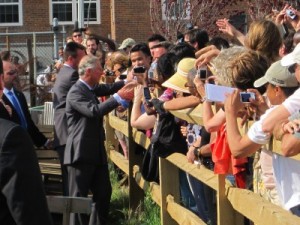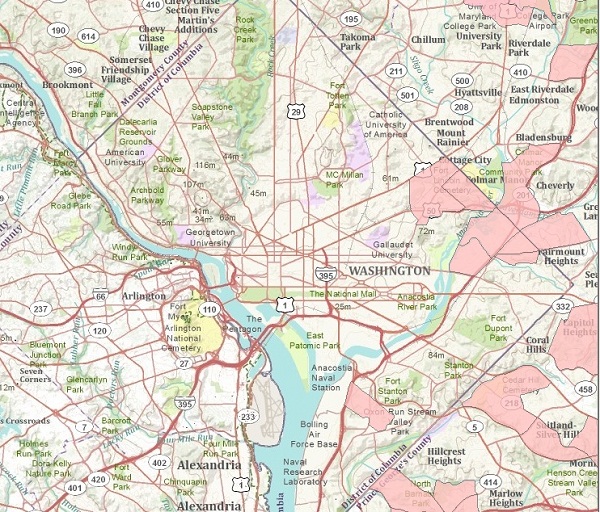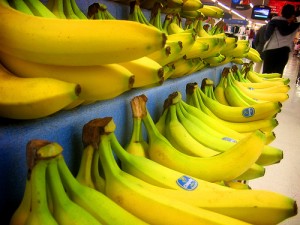Just days after the royal wedding, England’s Prince Charles visited D.C.’s largest urban farm.
Prince Charles, a sustainable agriculture advocate, visited Ledroit Park’s Common Good City Farm Tuesday as part of his D.C. trip. WAMU’s Courtney Collins reports that:
Common Good City Farm is a farm and education center that grows food for low-income Washington D.C. residents and encourages members of the community to volunteer.
Amanda Formica works at the farm every Tuesday and thinks Prince Charles is a fitting ambassador for sustainability.
“England is way ahead of the U.S. as far as its commitment to sustainability and global warming and creating green spaces,” says Formica.

Courtesy of: Courtney Collins
Prince Charles took time out of his farm tour to visit with community members standing outside the wooden fence.
Urban farming is cropping up throughout the city; just last month non-profit Bread for the City began work on “the largest” rooftop vegetable garden in the District.
Are these efforts the answer to D.C.’s food deserts? The mission behind most of them is to educate people on sustainable food and healthy eating, quite important points to make, but they can’t literally feed everyone in a food desert. Rather, advocates say such efforts help foster a more accessible conversation around these topics. Bread for the City communications development associate Greg Bloom has said about his group’s garden that:
All too often the question of food sustainability and environmental sustainability, it’s actually a really elitist conversation in that the people who are talking about it are the ones with the resources to experiment and buy high-end produce. We don’t think it has to be that way…. And it’s important for us to create at least one space for that.
Common Good City Farm is another space for that, as well.
As we noted before, there are exercise deserts in D.C., too. So although Prince Charles highlighting sustainable agriculture is important, perhaps next time he can also encourage exercise — may we suggest replicating First Lady Michelle Obama leading middle schoolers in doing “The Dougie?”




